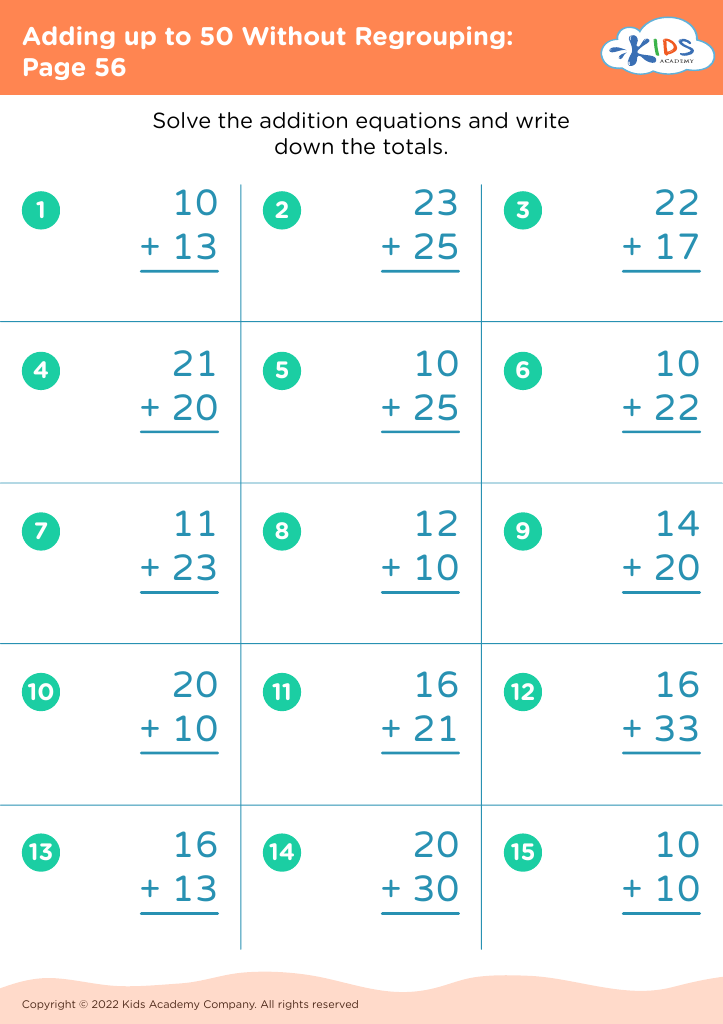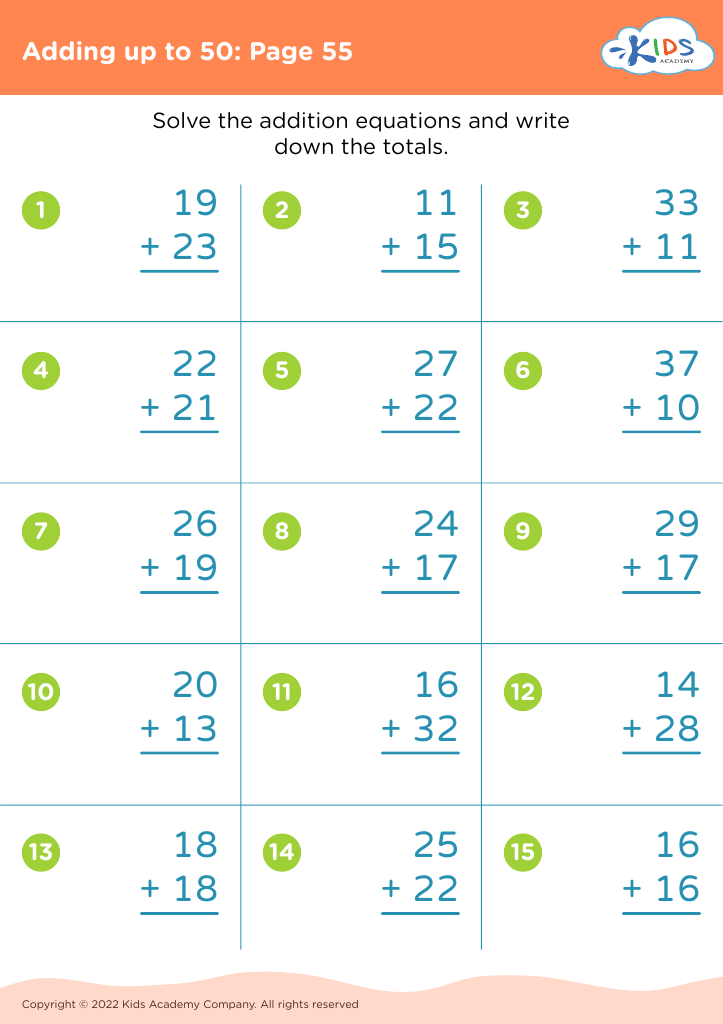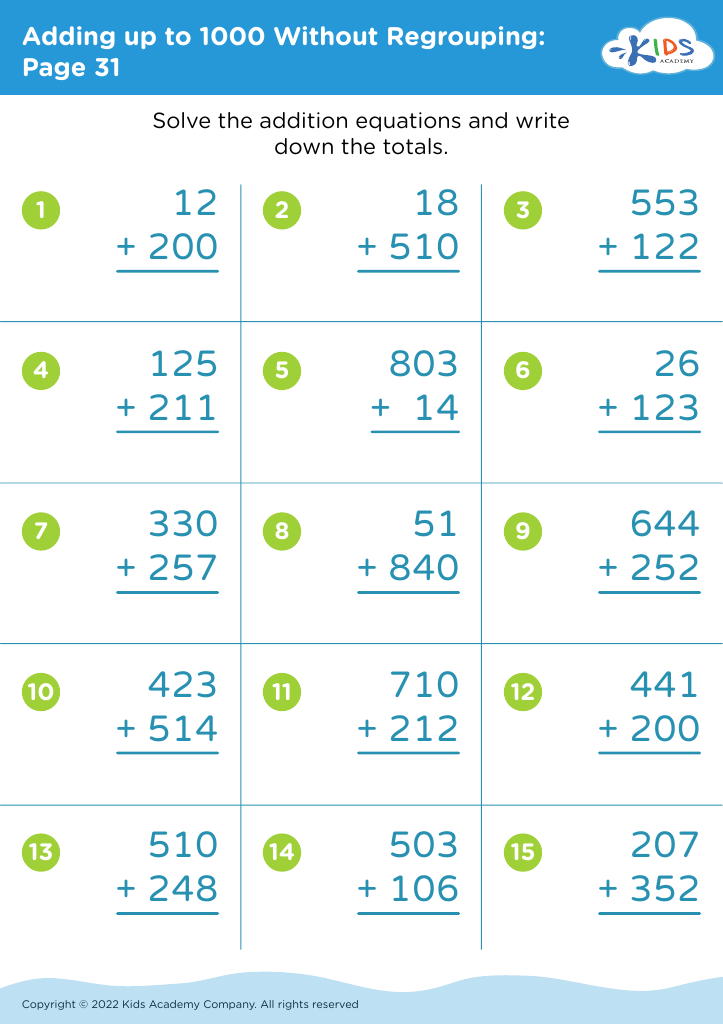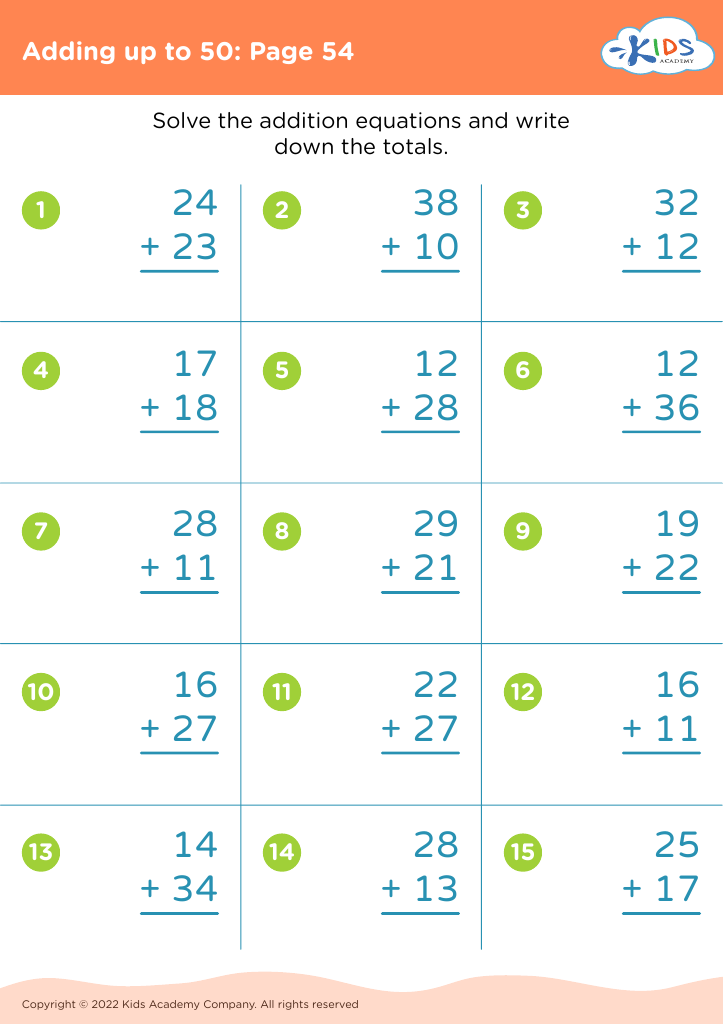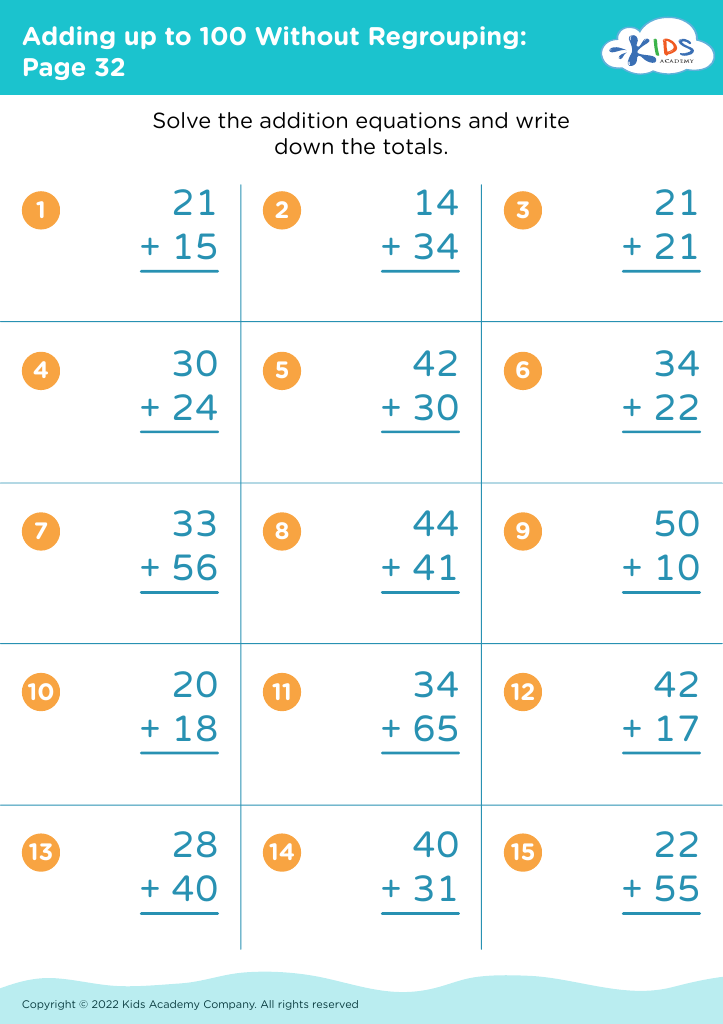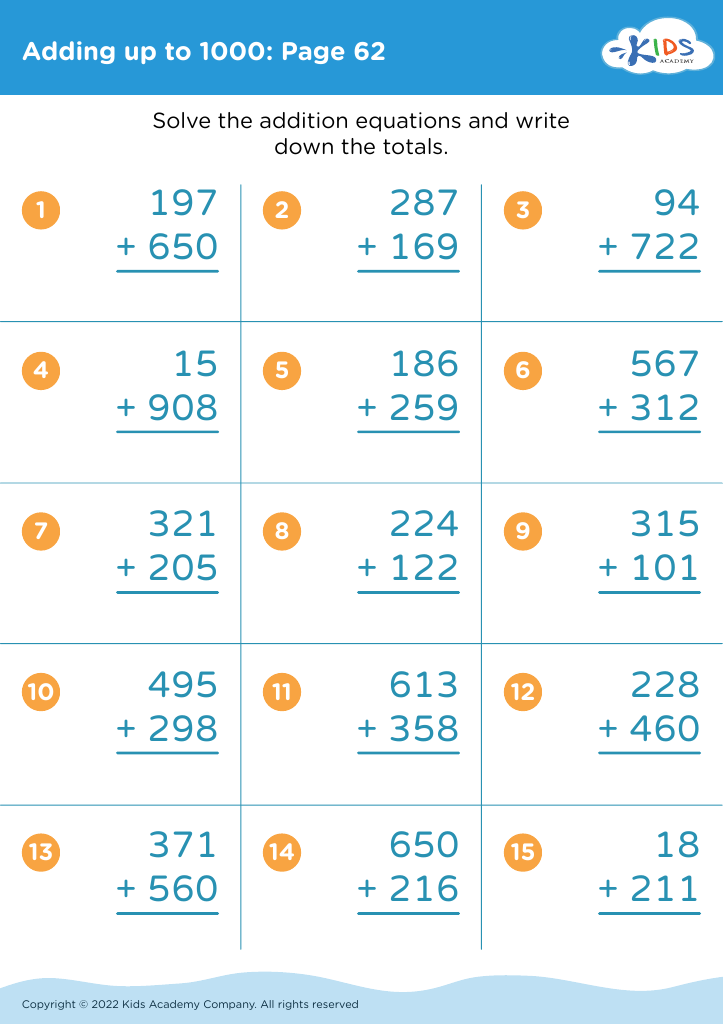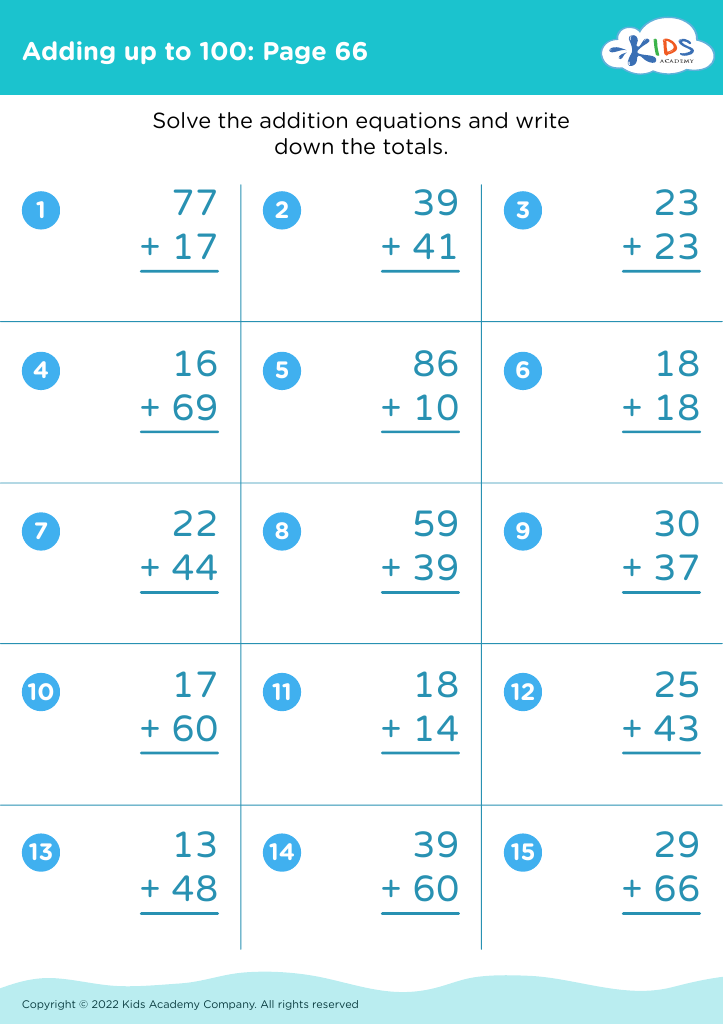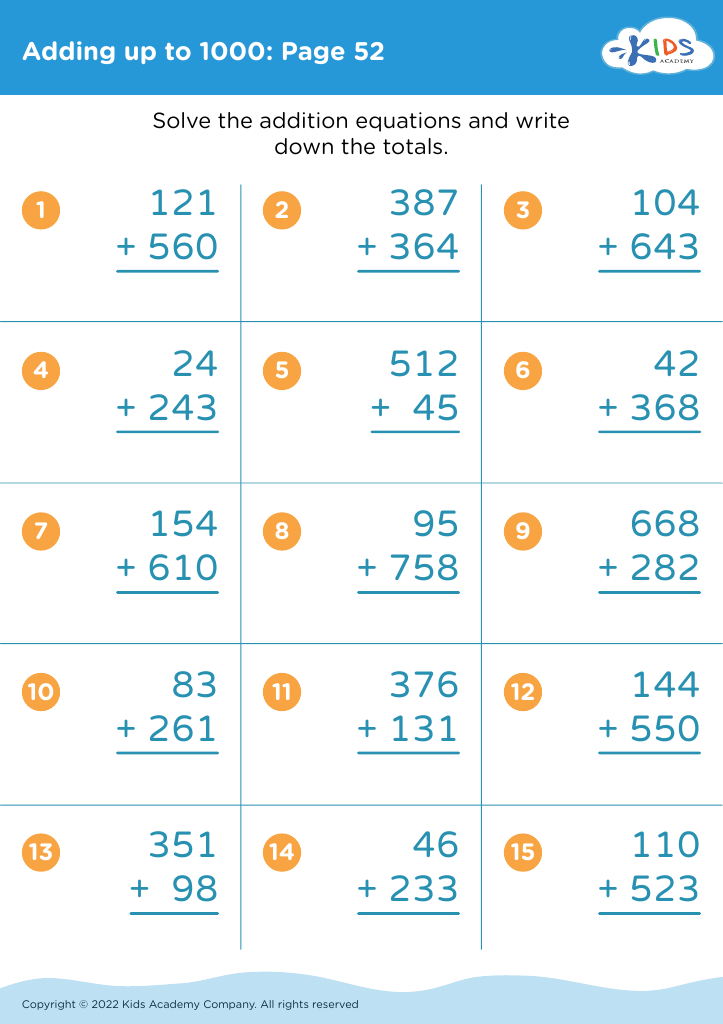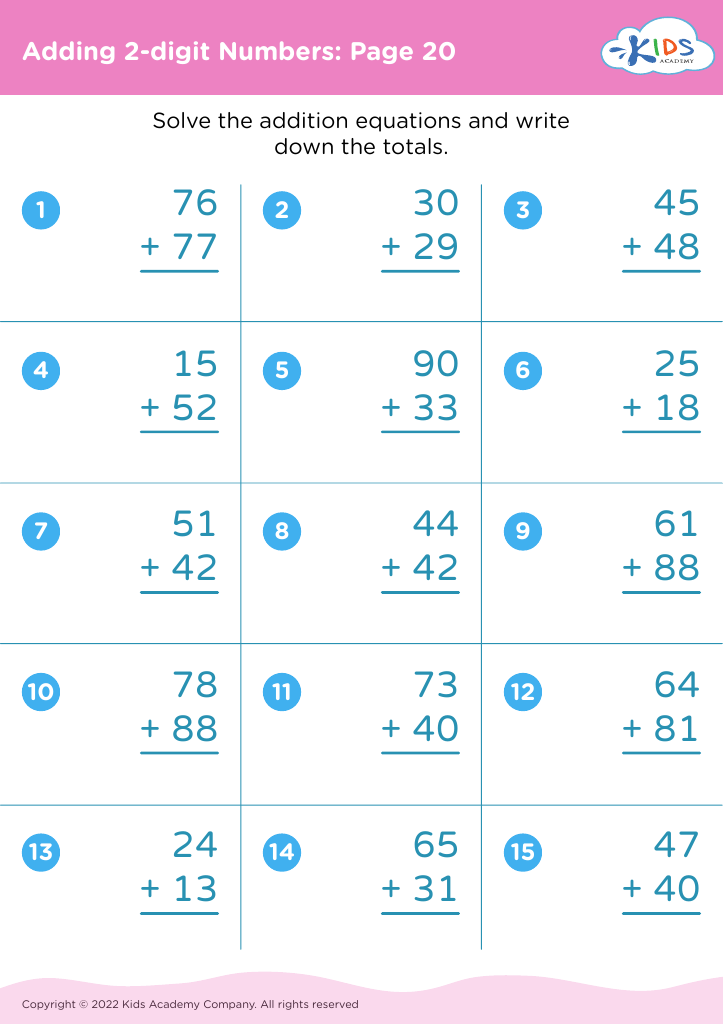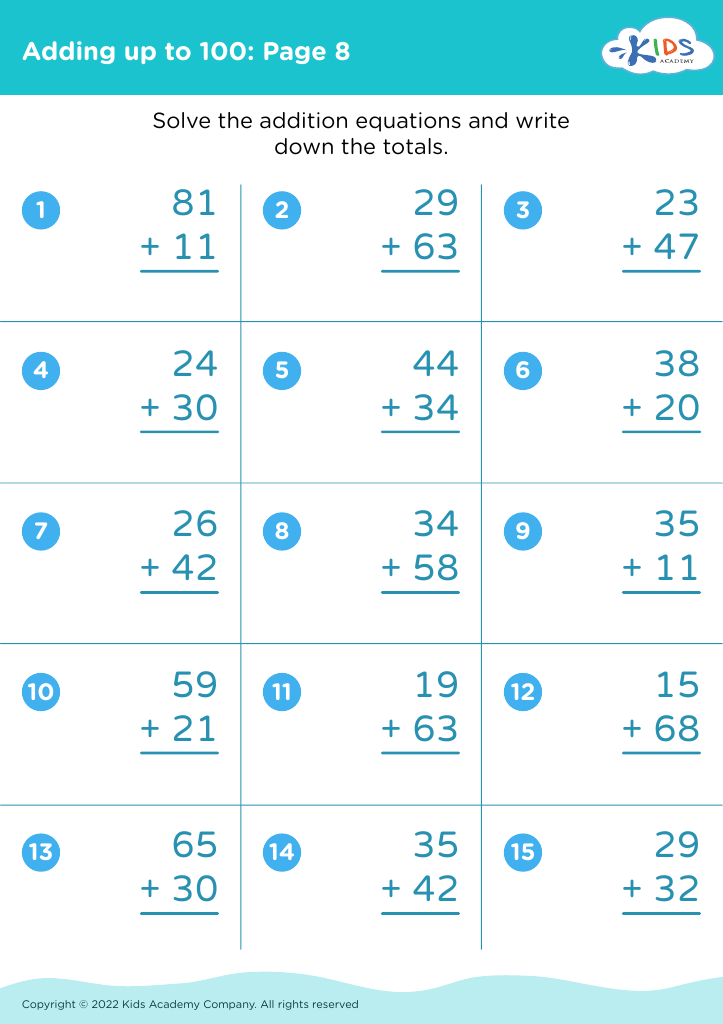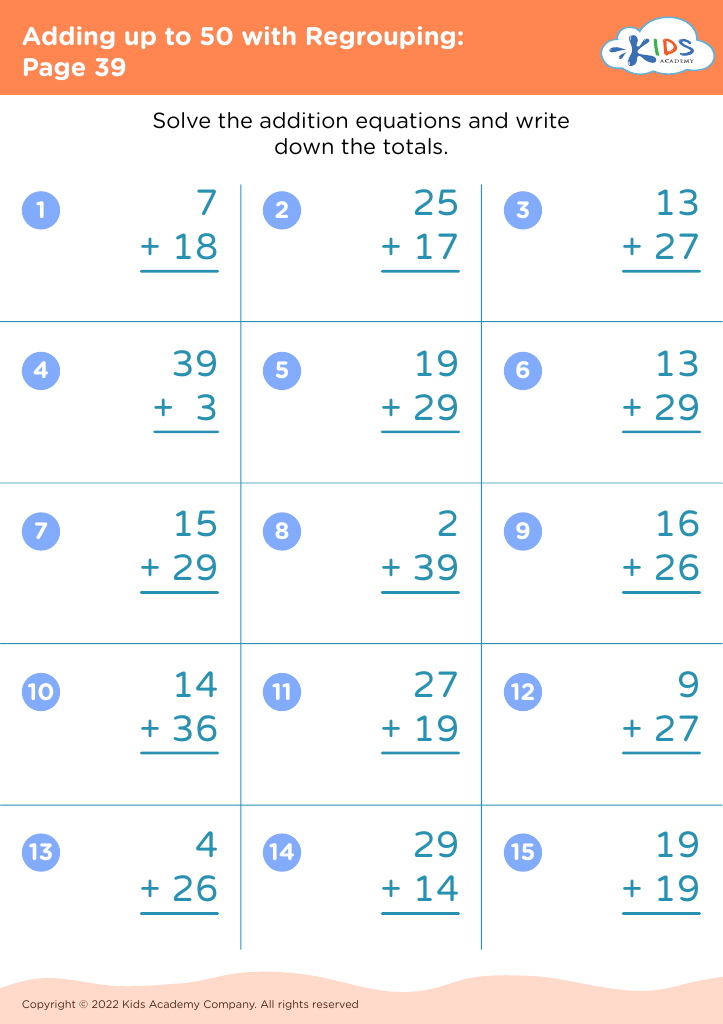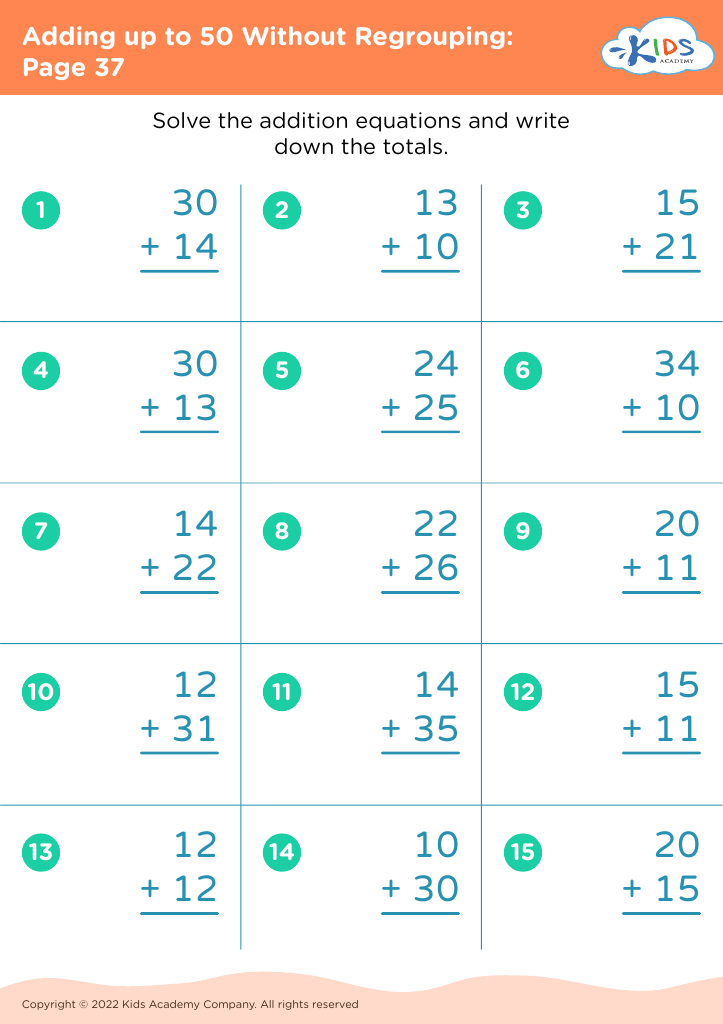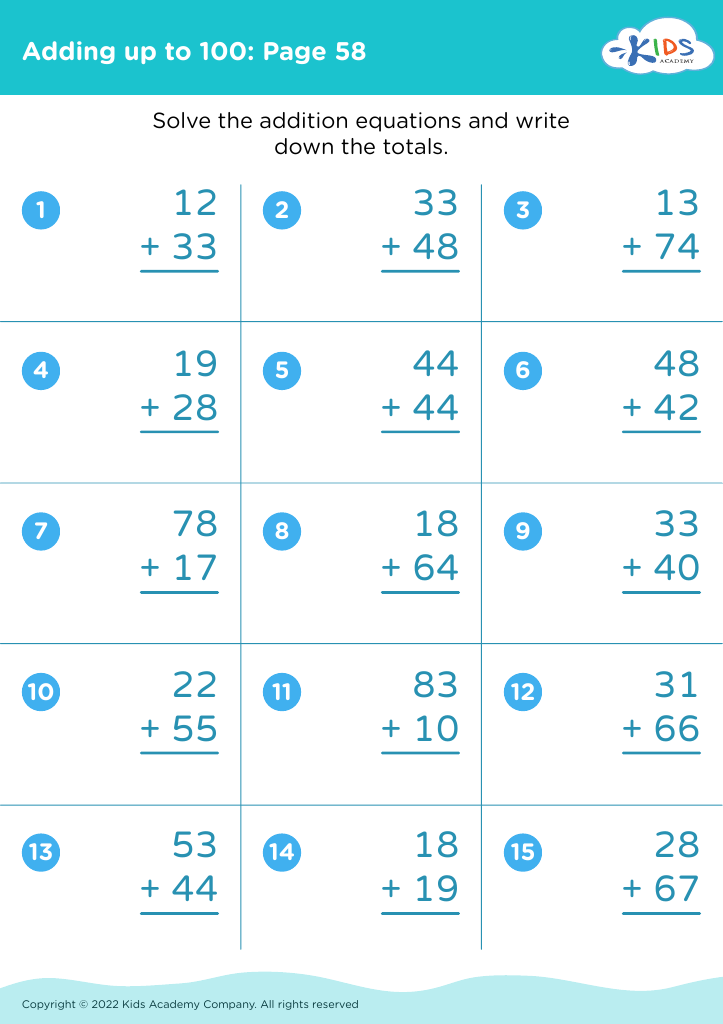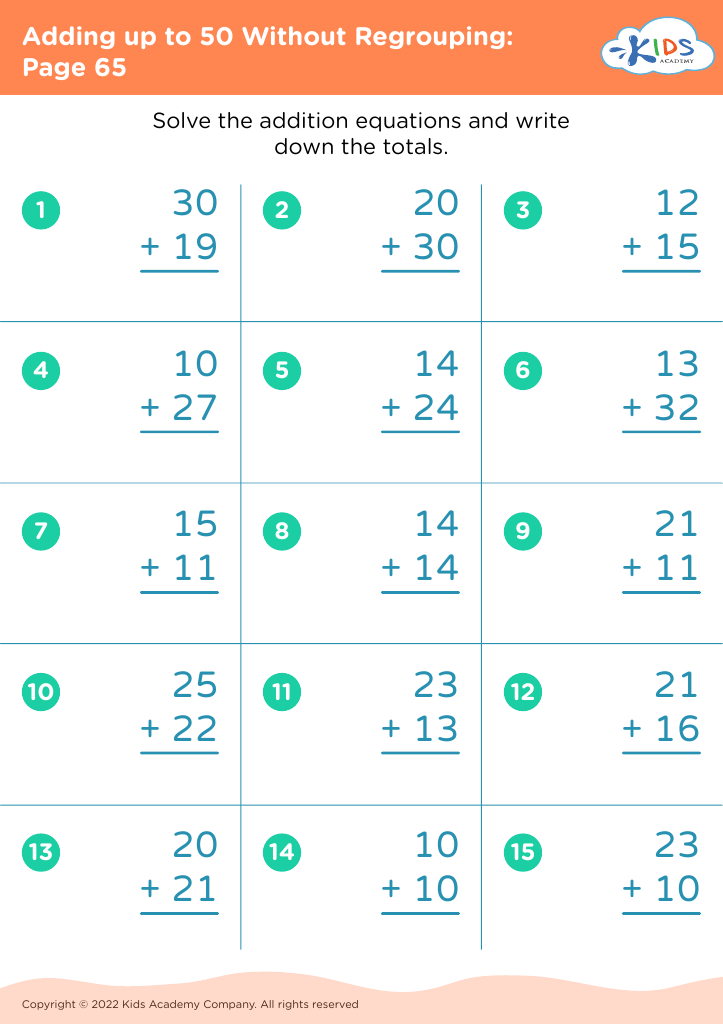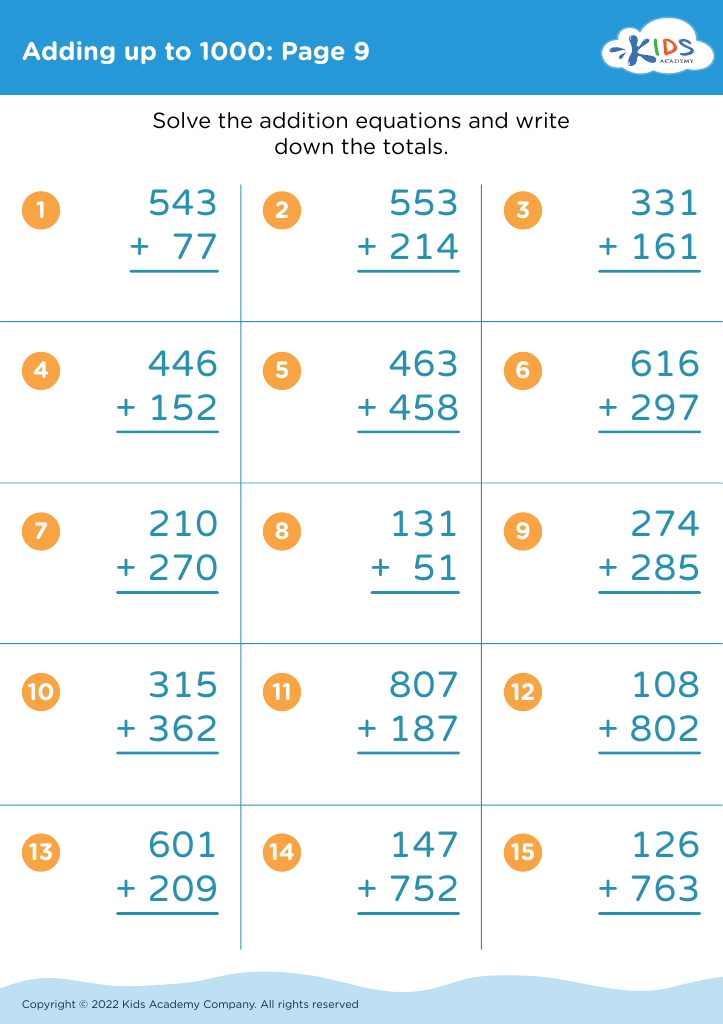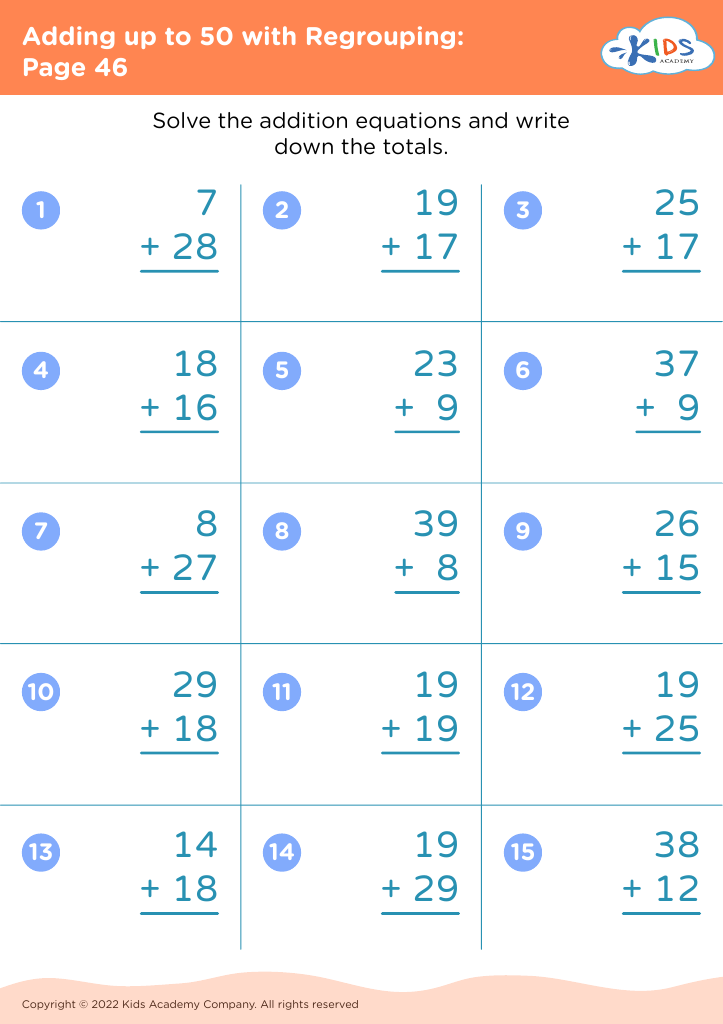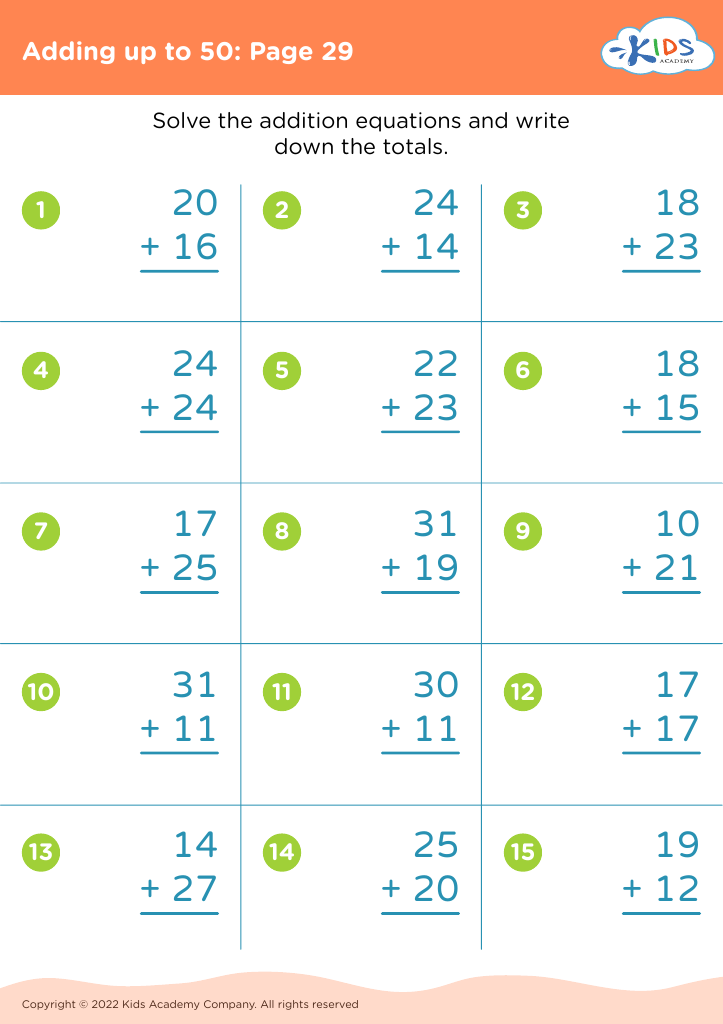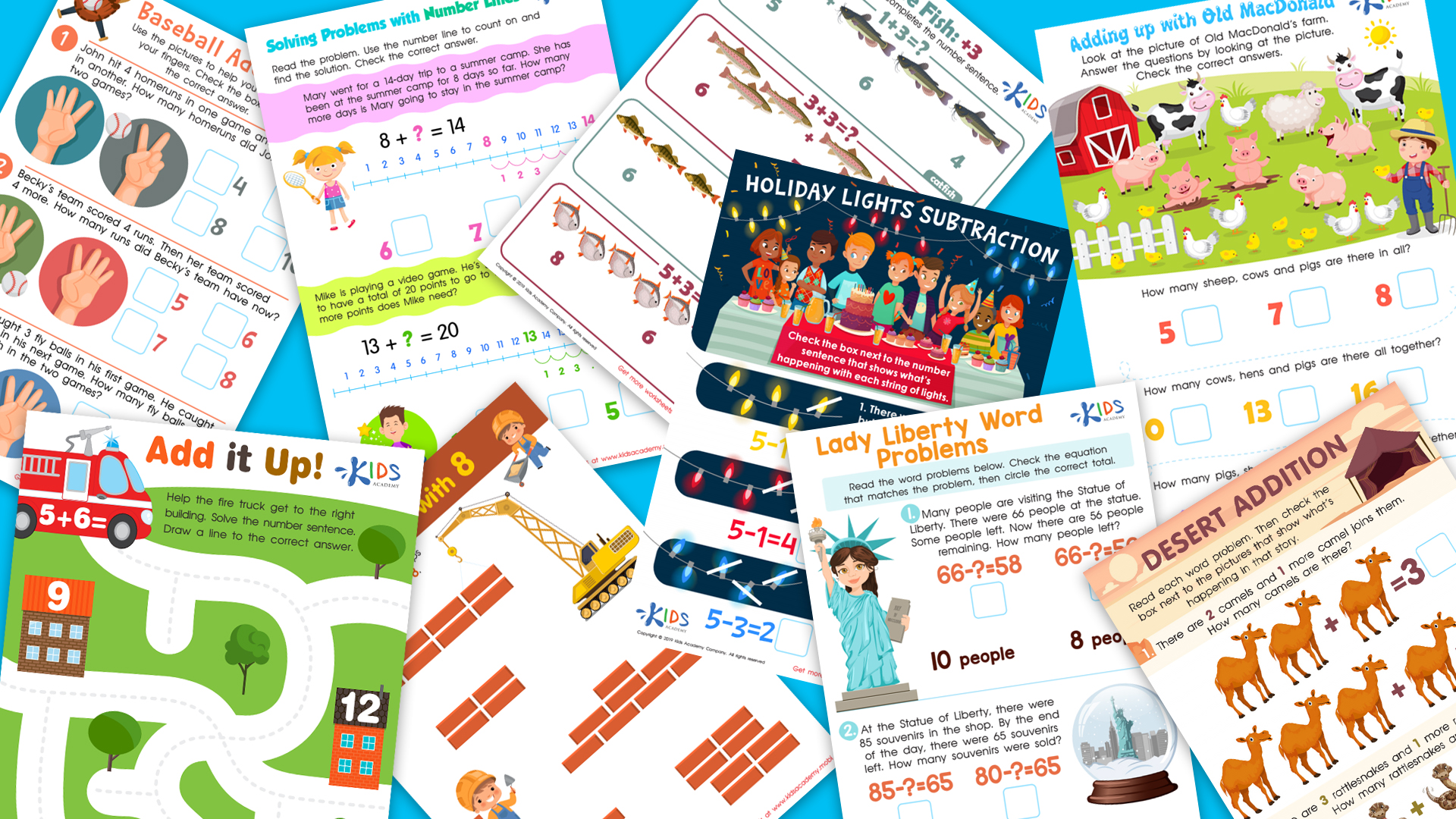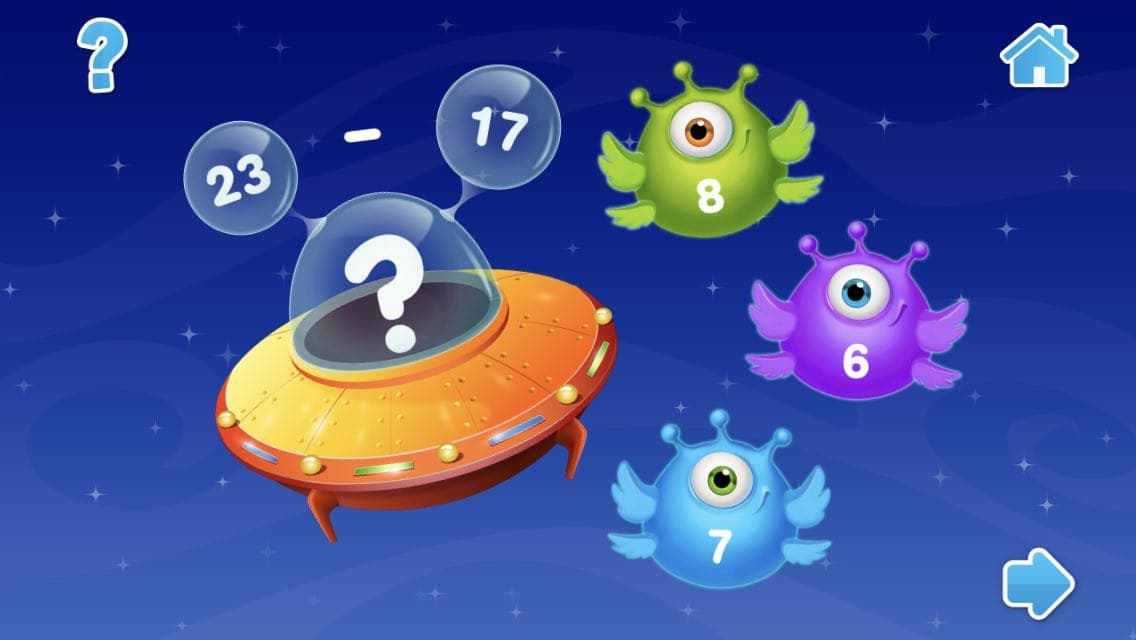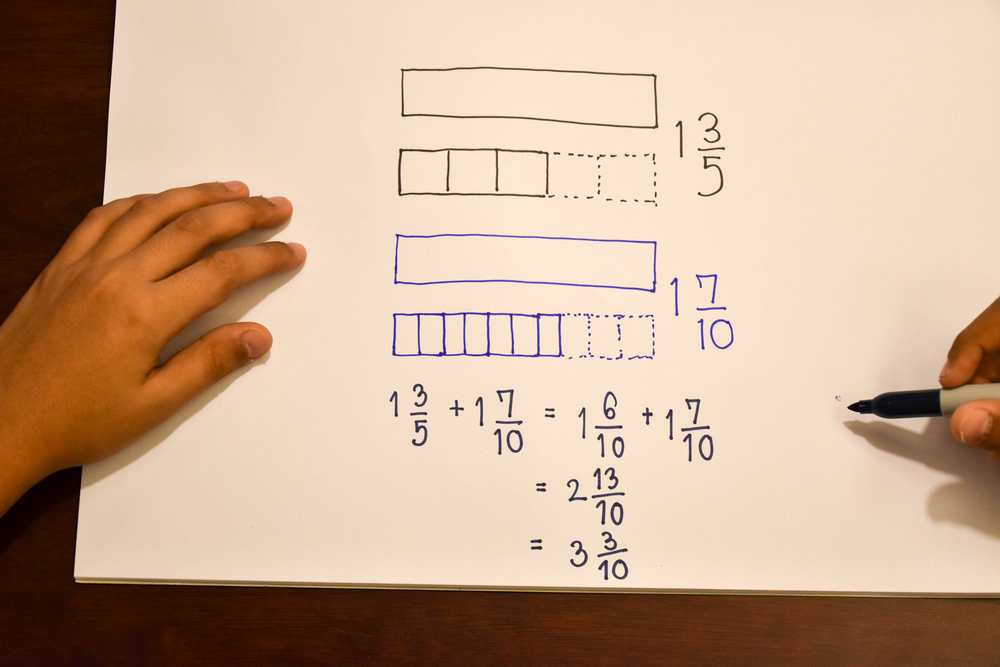Understand fractions Addition & Subtraction Worksheets for Ages 8-9
20 filtered results
-
From - To
Unlock the world of fractions with our engaging Addition & Subtraction Worksheets designed for children ages 8-9! These interactive worksheets make learning fractions fun and accessible, helping young learners grasp key concepts through a variety of exercises. Students will gain confidence in adding and subtracting fractions with like and unlike denominators while honing their problem-solving skills. Our resources are carefully crafted to align with educational standards and support home learning or classroom activities. Whether your child is struggling or excelling, these worksheets provide the perfect balance of challenge and support for mastering fractions. Empower their learning journey today!
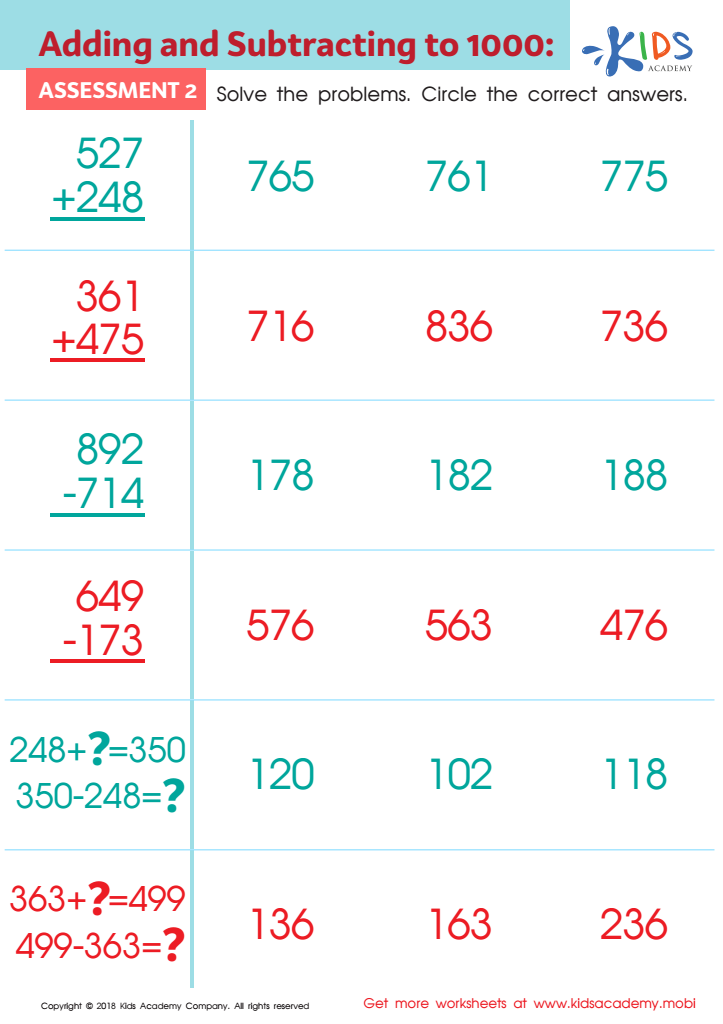

Adding and Subtracting to 1 Worksheet: Assessment 2
Understanding fractions, along with their addition and subtraction, is crucial for children aged 8-9 as it forms a foundational skill necessary for more advanced mathematical concepts and everyday life. At this age, students begin to move from understanding whole numbers to working with parts of a whole, which deepens their math proficiency. Mastering fractions enhances critical thinking and problem-solving skills, as children learn to compare, simplify, and manipulate these numerical components.
For parents and teachers, it’s important to recognize that a solid grasp of fractions promotes confidence in math, helps reduce math anxiety, and fosters a positive attitude toward learning in general. This age group is also a time when students encounter mathematical concepts that will serve them in fractions and allow for real-world application, such as cooking, dividing items, and understanding ratios and proportions.
Moreover, the ability to add and subtract fractions is pivotal because it sets the stage for topics in higher education, including algebra and geometry. Therefore, by emphasizing the importance of fractions in their learning journey, parents and teachers invest in the child's future success in math and their overall academic performance. Supporting children during this crucial stage is vital for their holistic development.
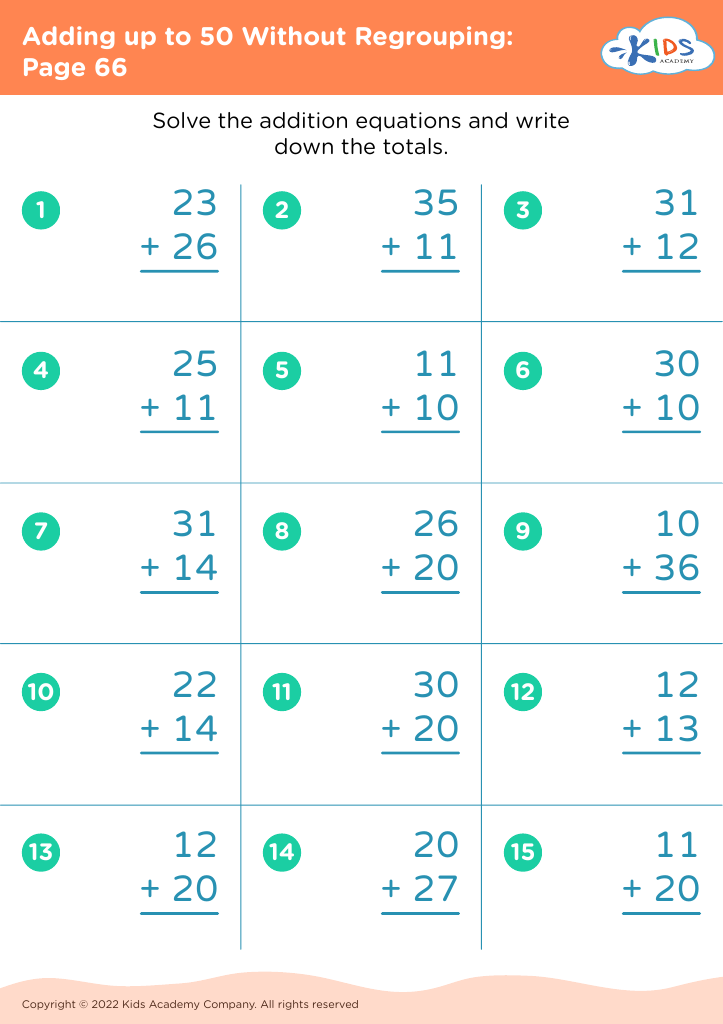

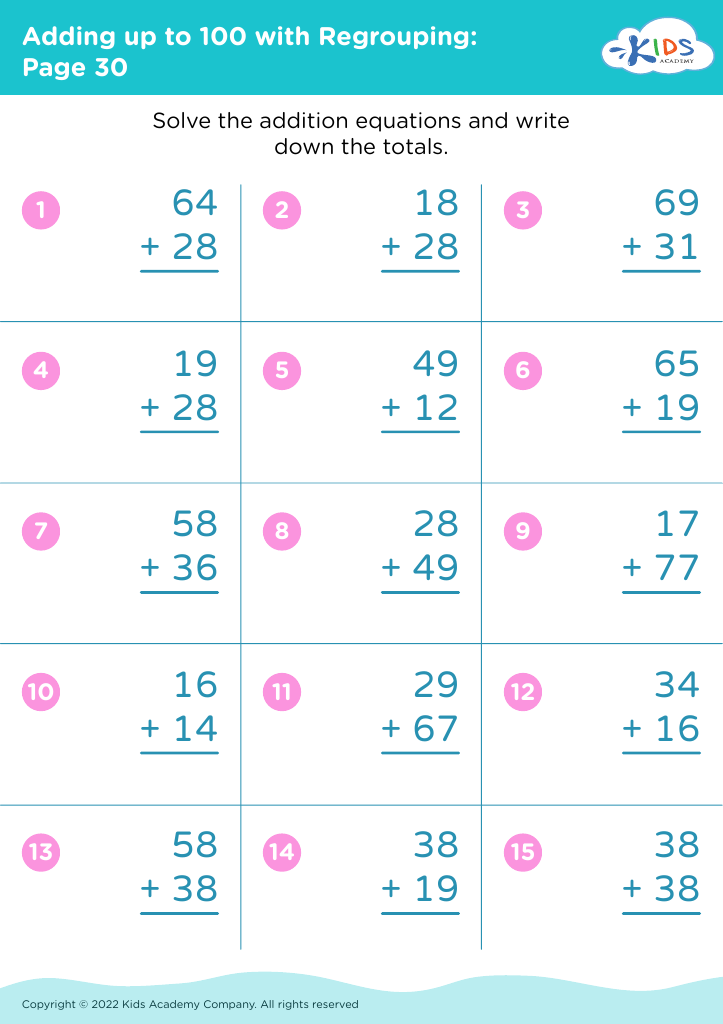
 Assign to My Students
Assign to My Students
